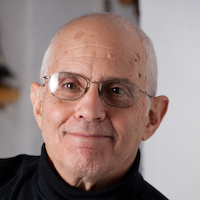We Need to Adapt With Discernment
When I saw that a book about Transcendental Meditation (TM), written by a scientist, had landed on the New York Times bestseller list, my reaction was to quote the great Yogi of Berra: “It’s déjà vu all over again.”
In 1975, “TM: Discovering Inner Energy and Overcoming Stress” was propelled onto the list when its lead author, psychiatrist Harold Bloomfield, appeared on Merv Griffin’s syndicated TV talk show (the Oprah of its day) with TM founder Maharishi Mahesh Yogi. The book remained a bestseller for six months, and then had a solid run on the paperback list. During that period, Merv devoted a second show to Maharishi, and TM centers could barely keep up with the demand. By the end of 1976, over a million Americans had learned to meditate.
This was the culmination of a remarkable eight-year run that began when the Beatles famously learned TM and sojourned at Maharishi’s ashram in India. Between that watershed moment and the two Merv programs, meditation moved from the counterculture to the mainstream, from weird to respectable, from youthful mind expansion to middle-age stress remedy. Now, the celebrity meditators were not rock stars but Clint Eastwood and Mary Tyler Moore, and you could not get more mainstream than the nation’s big screen hero and its TV sweetheart.
The route from esoteric mystical discipline to respectable relaxation technique was paved by science. It started in the late ’60s when a young meditator named Robert Keith Wallace was persuaded by his guru, Maharishi, to study the physiology of TM. The research became his Ph.D. dissertation, and then a Science magazine article in 1970. Wallace’s follow-up study, conducted with Harvard cardiologist Herbert Benson, was published in 1971 in The American Journal of Physiology and Scientific American. The data sparked an avalanche of research. By 1975, a substantial body of evidence had demonstrated the efficacy of meditation on various measures of physical and mental health.
Now comes another psychiatrist, Norman E. Rosenthal, with “Transcendence: Healing and Transformation through Transcendental Meditation.” Once again, celebrity endorsements add pizzazz, in this case Mehmet Oz, David Lynch, Martin Scorcese and Russell Simmons, with cameo appearances by the gray eminences, Ringo Starr and Paul McCartney. And once again science confers credibility. Whereas Bloomfield was fresh out of his Yale residency when Merv Griffin showcased his book, Rosenthal has 30 years of distinguished clinical research and more than 200 scholarly articles under his belt. And by now TM has been the subject of over 300 peer-reviewed articles. The book describes the most recent findings, many of them involving common maladies such as ADHD, PTSD and hypertension, but not limited to medical conditions.
That meditation is good for you is no longer an eye-opening news flash. But the new book’s bestsellerdom suggests that a new generation wants to hear the message. In this era of soaring anxiety, depression and health costs, perhaps the only people who don’t think that’s a good thing are the makers of pharmaceuticals.
As someone who has chronicled the transmission of Eastern spirituality to the West, I hope that this time around we can avoid some of the pitfalls of the past. As the title of Rosenthal’s book “Transcendence,” suggests, meditation is not just a medical intervention. The deeper purpose has always been the development of higher consciousness, as described in the Vedic tradition from which practices like TM derive. But when yogic methods become medicalized and their benefits quantified, they tend to get disconnected from their spiritual roots — a loss for all of us.
Another consequence of the popularization of meditation was the rise of imitation practices. Health experts, self-help mavens and entrepreneurs did everything they could to de-Hinduize and de-Indianize the practice. Recently, we’ve seen a similar tendency as practices derived from Buddhism were secularized as “mindfulness.” The advantage of this adaptation, of course, is that it makes such practices far more accessible. The downside is that something vital can be lost in translation, thereby diminishing their effectiveness. Modernizing the language is one thing, but tinkering with the ingredients of a meditation practice is not unlike changing a medical formula or a food recipe.
Finally, in the past, all forms of meditation were lumped together as if their differences were inconsequential. People who should have known better assumed that the initial TM data could be applied to just about anything that resembled meditation. That techniques practiced differently would produce identical outcomes defies logic, yet the premise was accepted on faith and promoted by both healthcare professionals and New Age promoters. Recent findings have corrected that mistake to a large extent, and current researchers are sorting out which practices produce which results under which circumstances.
The scientific investigation of ancient spiritual practices might be one of the most important advances of the modern era. But we have to proceed with care and discernment, assimilating the methods without obscuring or dishonoring their roots. If we get careless, we can dilute them, corrupt them and otherwise fail to harness their full potential. It’s happened to some extent already, and it’s happening as we speak in the trendy world of yoga studios, where complex and profound teachings are being reduced to fitness exercises. Rudyard Kipling’s assertion that “East is East and West is West and never the twain shall meet” turned out to be mistaken, to our everlasting benefit. But we have to make sure that East does not become West.
[NOTE: This was originally published on Huffington Post. I chose not to rewrite it for Elephant, even though most of you know a lot of this.]
 Share on bsky
Share on bsky

Read 6 comments and reply